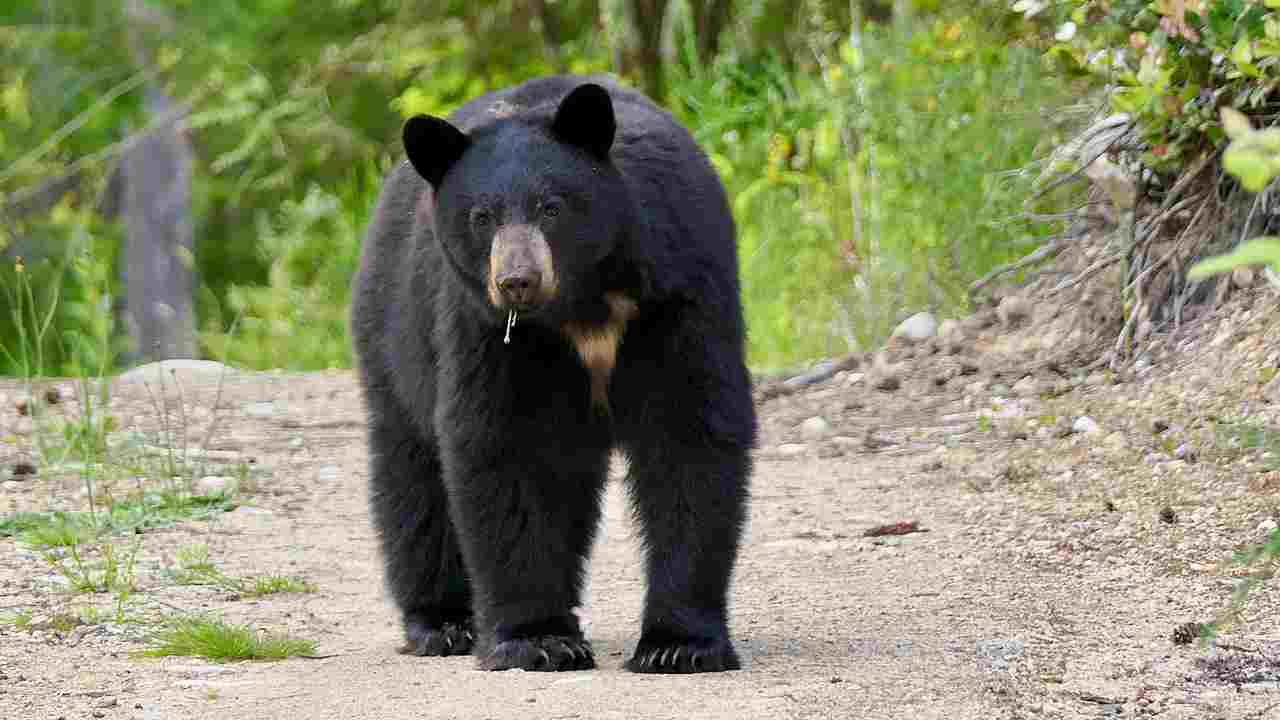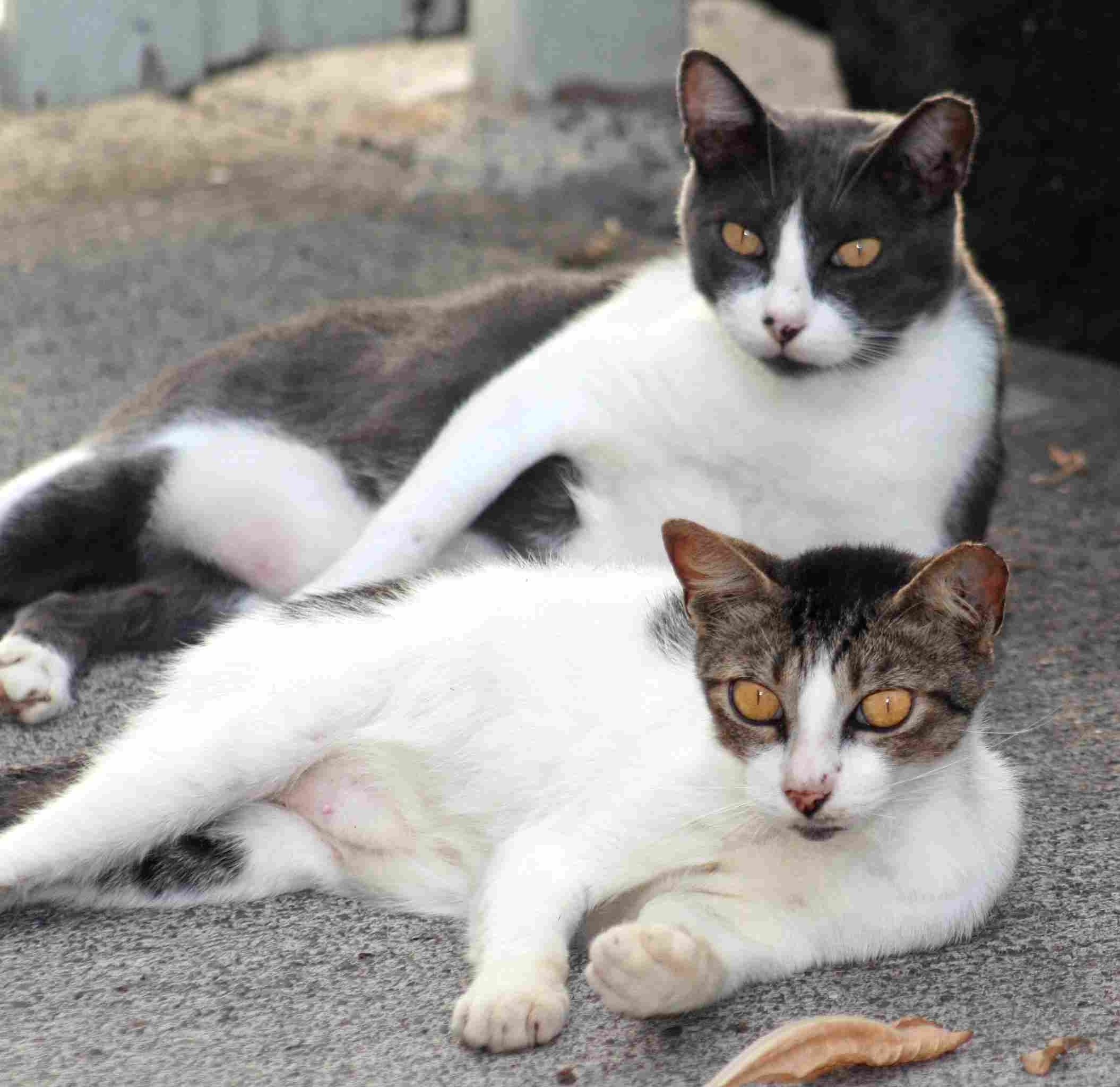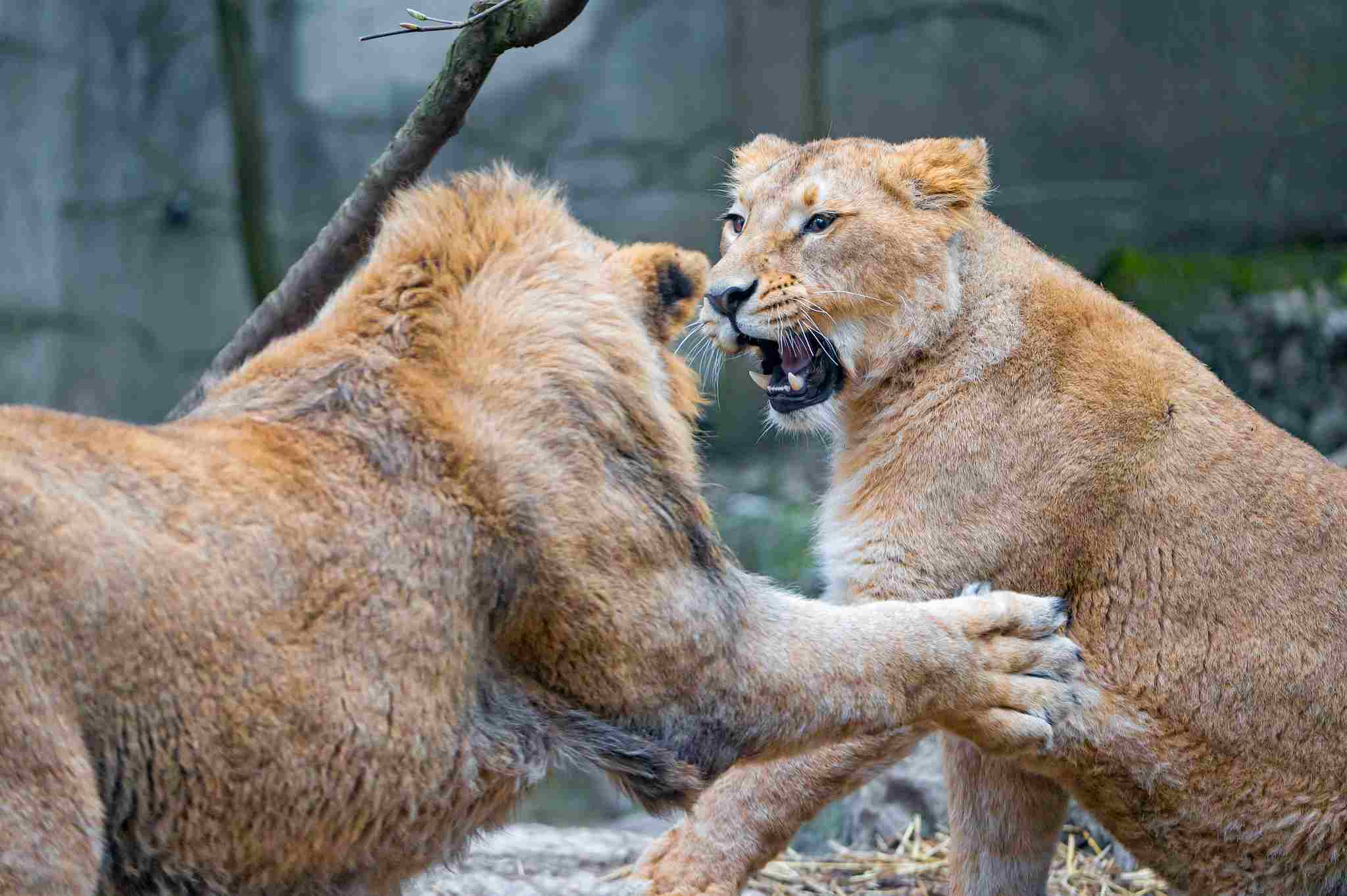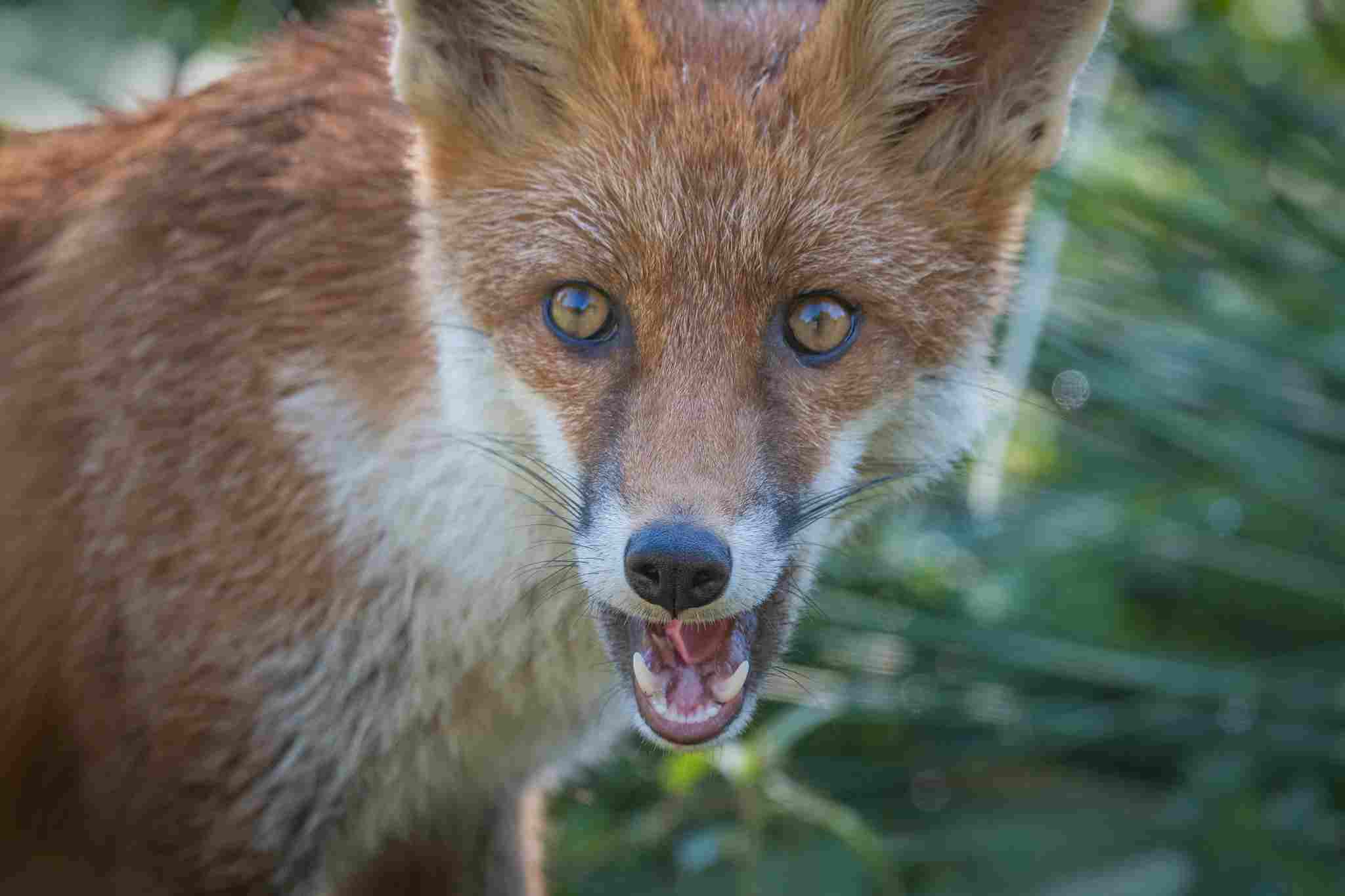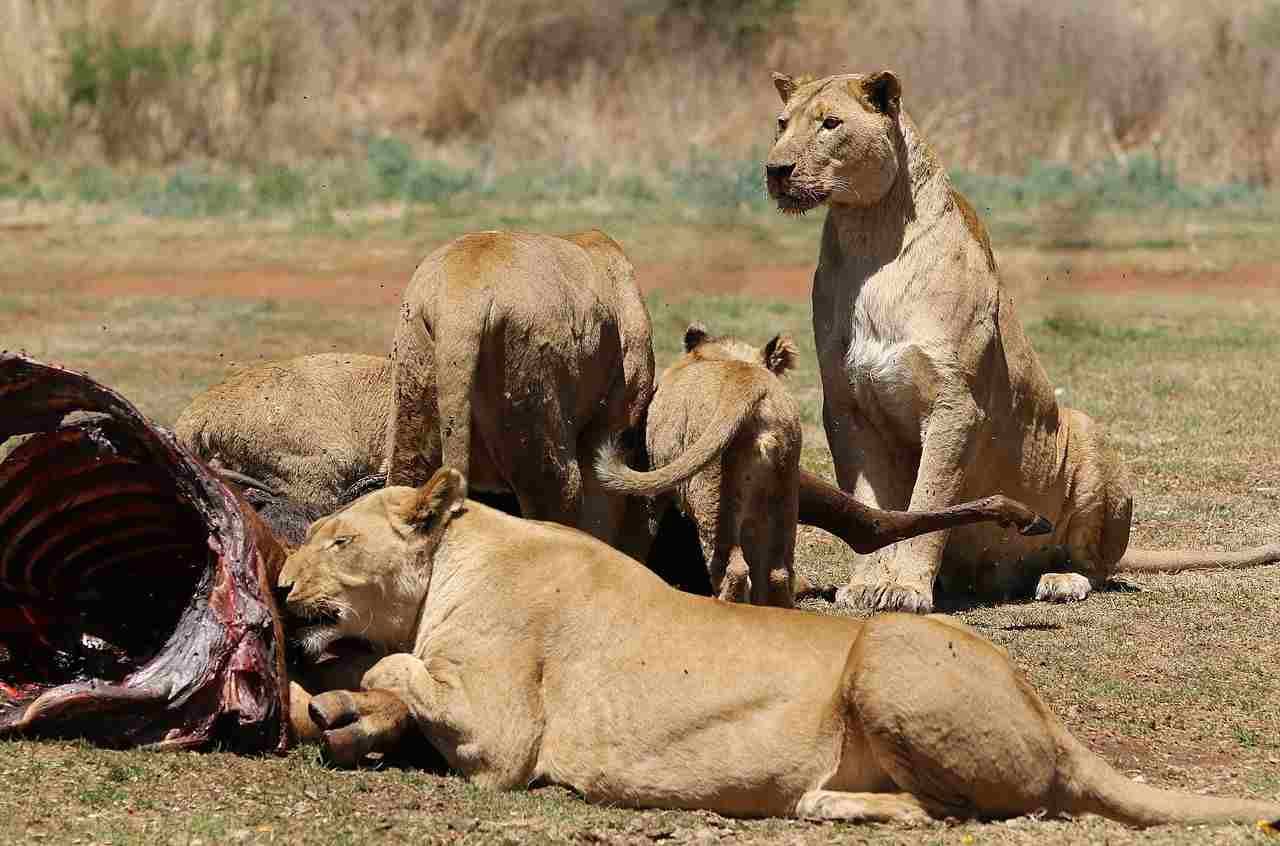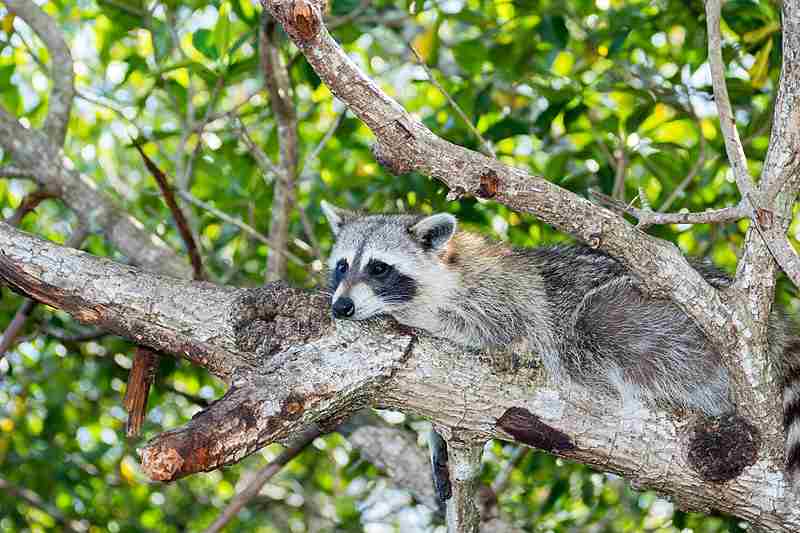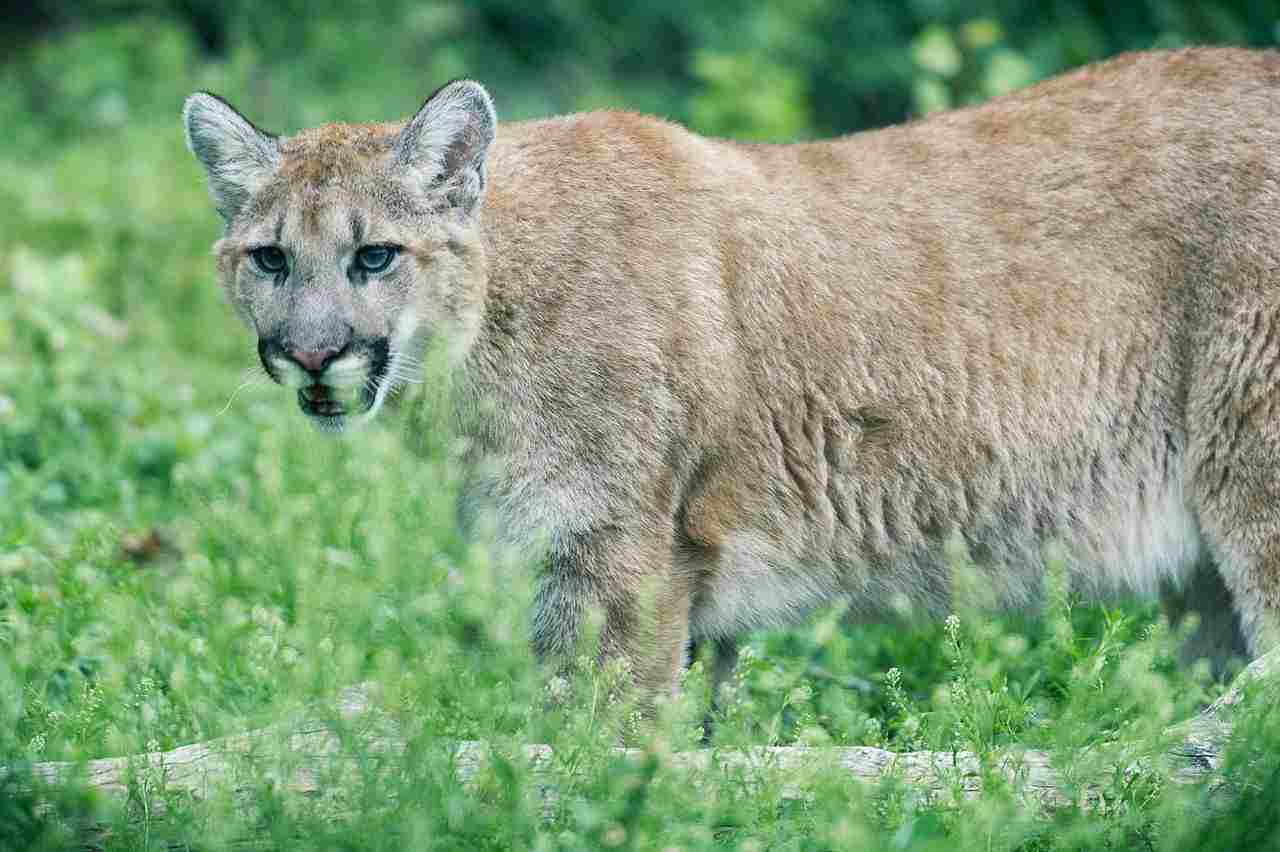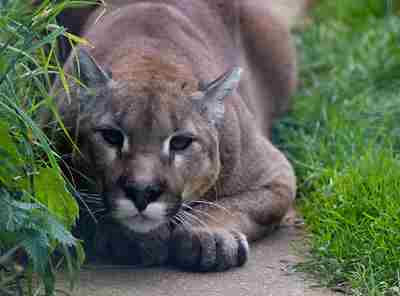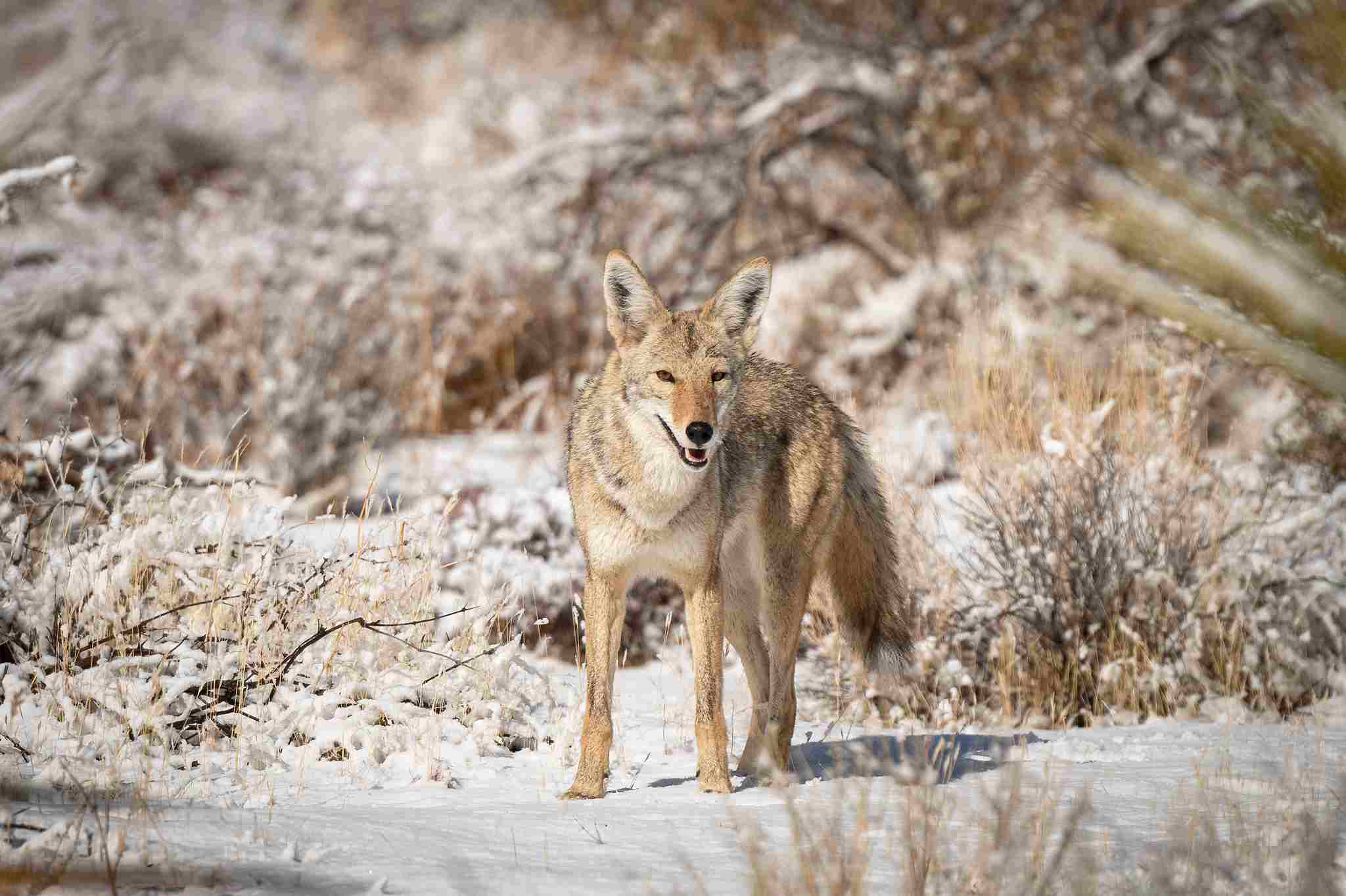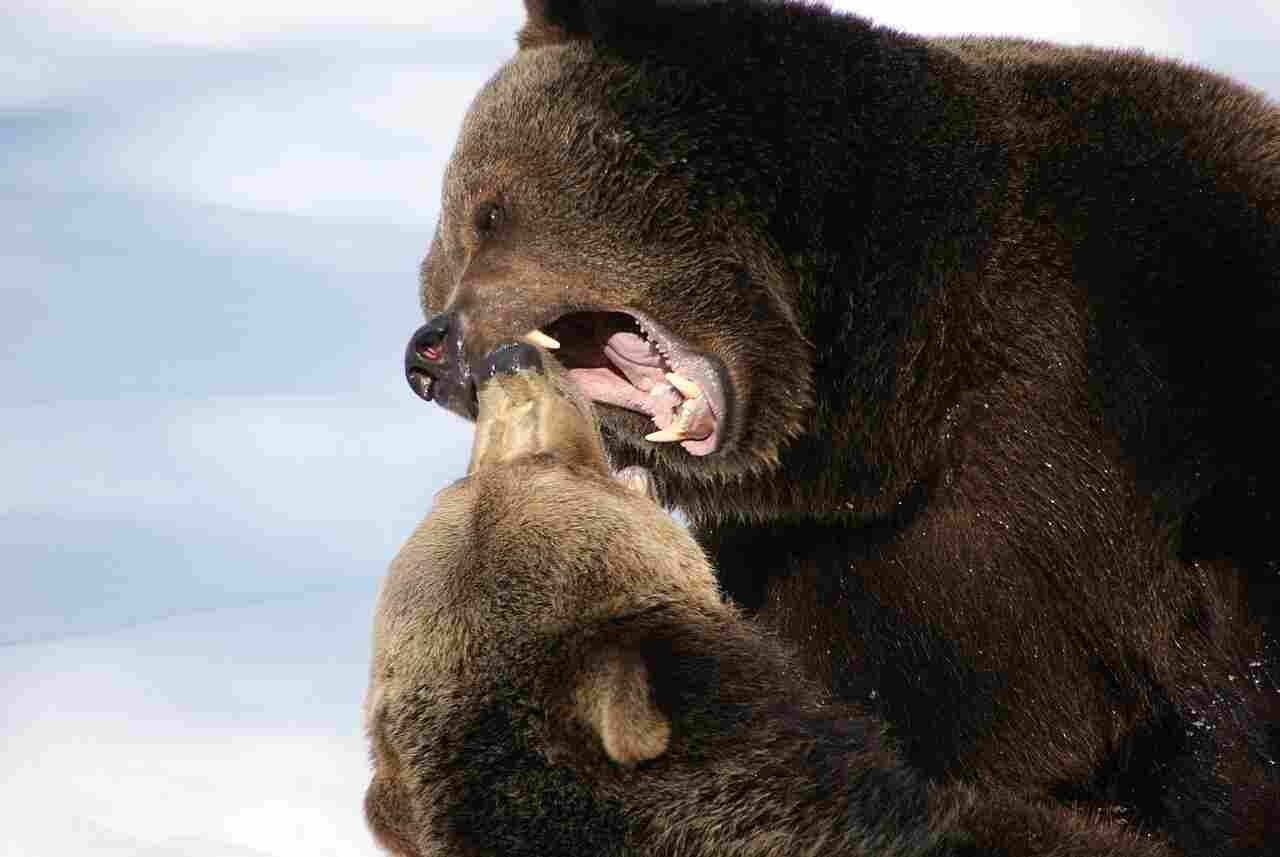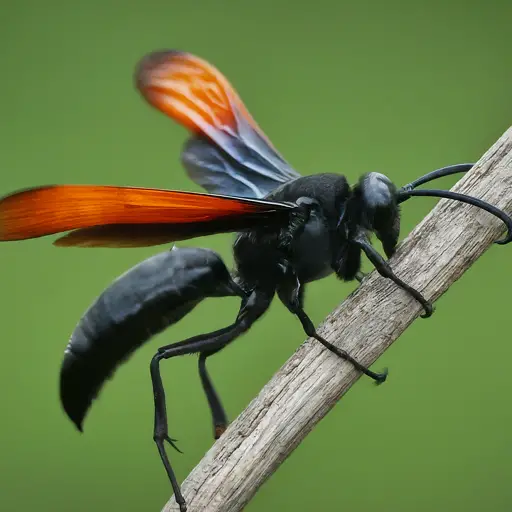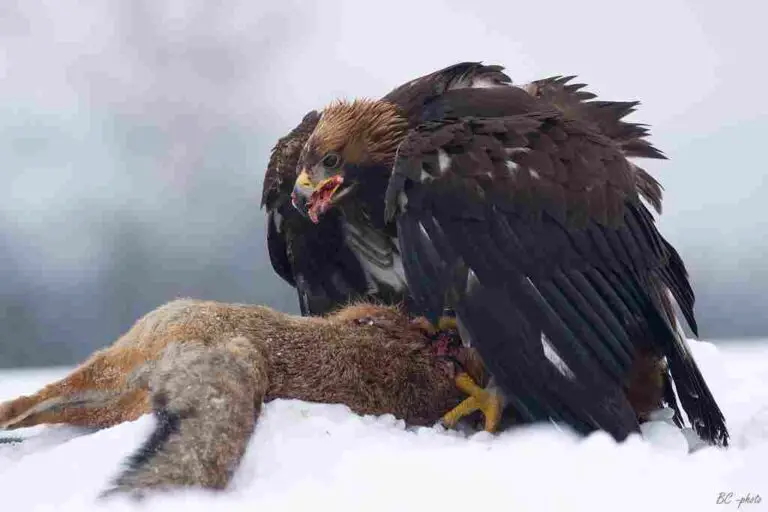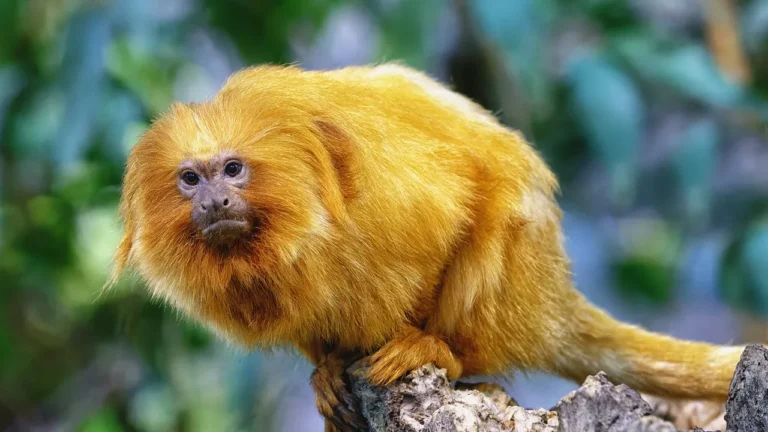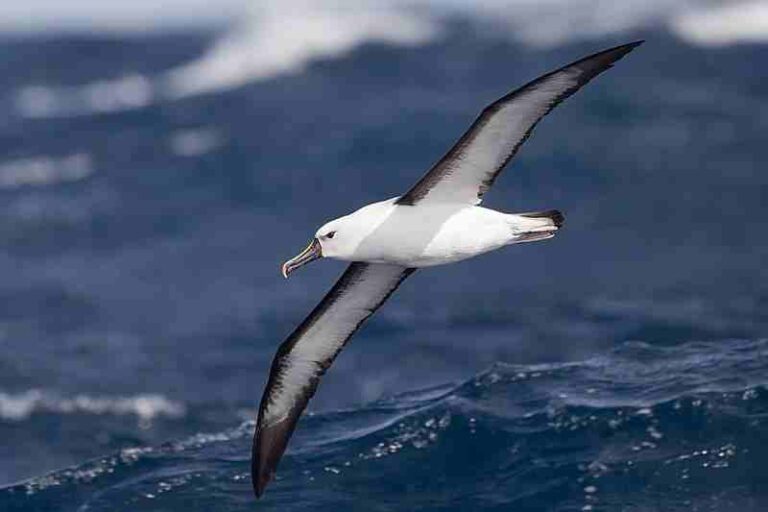9+ Predators In Colorado And Its Environs Discussed
Examples of predators in Colorado are the mountain lion, black bear, coyote, fox, and wolf. Each has unique characteristics, like the mountain lion’s territorial nature and the black bear’s omnivorous diet. Other predators include the black widow spider, known for its venomous bite, and the brown recluse spider, which can cause necrotic wounds. Additionally, there are feral cats impacting local wildlife, smallmouth bass introduced for sportfishing, badgers with their burrowing habits, and raccoons, clever omnivores that often raid garbage cans.
1. Mountain Lion
Mountain lions, also known as cougars or pumas, are the largest cats in Colorado and among the most elusive predators in the region. These powerful animals have a tawny coat with a lighter underbelly, and their long tails often have a distinct black tip. Adult males can weigh between 140 and 180 pounds, while females are slightly smaller. Mountain lions are primarily nocturnal, making them hard to spot, but they are found throughout Colorado, from mountainous regions to lower elevation areas where prey is abundant. These predators are known for their agility and strength, capable of taking down large prey such as deer with a single, powerful pounce.
Mountain lions are solitary creatures, with males and females only coming together briefly to mate. They are territorial, with males occupying larger territories that may encompass several females’ ranges. As apex predators, mountain lions play a crucial role in maintaining the balance of ecosystems, helping to control deer populations and other herbivores. Although mountain lion attacks on humans are rare, they can occur, especially in areas where human development encroaches on their habitat. To reduce the risk of encounters, it’s essential to be aware of your surroundings, keep pets close, and avoid hiking alone in remote areas during dawn or dusk when these cats are most active.
2. Black Bear
Black bears are among the most common large predators in Colorado, easily recognized by their broad, stocky build and shaggy fur. Despite their name, black bears can range in color from black to brown, cinnamon, or even blond, depending on their geographical location and individual genetics. Adult males can weigh up to 600 pounds, while females are generally smaller, around 200 to 400 pounds. They are omnivorous, with a diet that includes fruits, nuts, insects, small mammals, and even garbage, which can bring them into contact with humans.
Black bears are known for their adaptability and intelligence, often figuring out ways to access food in human settlements, leading to conflicts. They hibernate during the winter months, using their body fat to sustain them until spring. Their home ranges can be quite extensive, with males covering larger areas than females. Despite their formidable size, black bears are generally shy and prefer to avoid humans. However, it’s essential to take precautions when in bear country, such as securing food and garbage, to reduce the chances of attracting them.
3. Coyote
Coyotes are adaptable and intelligent predators found throughout Colorado’s diverse landscapes. Their size varies but typically ranges from 20 to 50 pounds, with a slender build, pointed ears, and a bushy tail. Coyotes are opportunistic feeders, with a diet that encompasses small mammals, birds, reptiles, fruits, and even human food scraps. They are highly adaptable, thriving in rural, suburban, and even urban environments, which has contributed to their population growth and expanded range.
Coyotes are generally solitary hunters, but they also form family groups or packs, particularly during the breeding season. They are vocal animals, often communicating through a range of howls, yips, and barks. Coyotes play an important ecological role in controlling populations of rodents and other small prey. However, their adaptability can lead to conflicts with humans, especially when they prey on pets or livestock. To minimize these conflicts, it’s crucial to avoid feeding coyotes, secure trash bins, and keep pets indoors or under close supervision.
4. Fox
Foxes are smaller predators found throughout Colorado, with the red fox being the most common species. They are easily recognized by their reddish-orange fur, bushy tails, and pointed ears. Foxes are adaptable and thrive in various habitats, from forests and grasslands to suburban and urban areas. They are opportunistic feeders, with a diet that includes small mammals, birds, insects, fruits, and even human food waste, allowing them to thrive in a range of environments.
Foxes are generally solitary, except during the breeding season when they form family units to raise their young. They are known for their intelligence and agility, often seen darting through fields or urban landscapes with speed and grace. Foxes play an important role in controlling populations of small mammals and are also an indicator of a healthy ecosystem. While they are generally not a threat to humans, they can occasionally pose a risk to pets and livestock. To reduce potential conflicts, it’s advisable to secure garbage, avoid feeding them, and keep pets indoors or closely supervised.
5. Wolf
Wolves were once native to Colorado but were extirpated from the state by the early 20th century due to hunting and habitat loss. However, they have recently made a comeback, with the state embarking on a reintroduction plan. Wolves are the largest members of the canine family, with a robust build, thick fur, and a variety of coat colors ranging from gray to black. Adult males can weigh up to 180 pounds, while females are generally smaller. Wolves are social animals, living in packs that include a breeding pair and their offspring, which allows them to cooperate in hunting and caring for young.
Wolves are apex predators, with a diet primarily consisting of large ungulates like deer and elk, but they can also eat smaller prey when necessary. Their reintroduction has sparked both excitement and concern, with supporters emphasizing the ecological benefits of restoring a key species, while opponents worry about potential conflicts with livestock and human activities. Wolves have a complex social structure and communicate through a range of vocalizations, body language, and scent marking. To ensure a harmonious coexistence, careful management strategies are needed to address the interests of both wolves and local communities.
6. Black Widow Spider
The black widow spider is one of the most notorious arachnids in Colorado, known for its distinctive black body and red hourglass marking on the underside of its abdomen. Females are typically larger than males, and they are the ones that carry the iconic red marking. Black widows are found in a variety of habitats, including woodpiles, sheds, and basements, where they spin their irregular, tangled webs. They are generally shy and prefer to avoid human contact, but they will bite in self-defense if threatened.
The venom of a black widow spider is potent, containing neurotoxins that can cause severe pain, muscle cramps, and other symptoms. Although bites can be serious, they are rarely fatal, especially with prompt medical treatment. Black widows play a role in controlling insect populations, but their presence can be concerning for homeowners. To reduce the risk of encounters, it’s recommended to wear gloves when working in areas where they might be present and to keep storage areas clean and free of clutter. If bitten, seeking immediate medical attention is crucial.
7. Recluse Spider
The recluse spider, commonly known as the brown recluse, is another potentially dangerous arachnid found in Colorado. It is generally brown with a violin-shaped marking on its back, giving it the nickname “violin spider.” These spiders prefer dark, secluded areas like closets, attics, and basements, where they build their webs to catch prey. They are typically nocturnal and shy, avoiding human contact, but they can bite if they feel threatened or are accidentally disturbed.
Recluse spider bites are known for causing necrotic wounds due to the presence of a potent enzyme in their venom. While serious complications are rare, bites can result in painful sores that require medical treatment. To reduce the risk of encounters, it’s advisable to keep storage areas clean, use caution when moving items that haven’t been disturbed for a while, and wear protective clothing when working in potentially infested areas. If bitten, prompt medical attention is crucial to manage symptoms and prevent further complications.
8. Feral Cat
Feral cats are domestic cats that have returned to a wild or semi-wild state, living in colonies throughout Colorado. They are often the descendants of stray or abandoned cats and can be found in urban, suburban, and rural areas. Feral cats are highly adaptable and resourceful, relying on their hunting skills to catch small mammals, birds, and other prey. They are typically wary of humans and prefer to avoid contact, although some may become accustomed to people who provide them with food.
Feral cats pose a significant challenge to wildlife conservation and public health. They can impact native bird populations and other small wildlife through predation, and they can spread diseases such as toxoplasmosis and feline leukemia. Efforts to manage feral cat populations often involve trap-neuter-return (TNR) programs, which aim to humanely reduce their numbers over time. These programs capture feral cats, spay or neuter them, and then return them to their colonies to prevent further breeding. While TNR can help control feral cat populations, the broader impact of these cats on local ecosystems remains a topic of debate.
9. Smallmouth Bass
Smallmouth bass are predatory fish found in Colorado’s rivers and reservoirs. They are a popular target for anglers due to their fighting spirit and tasty flesh. Smallmouth bass have a distinctive appearance, with a brown or bronze coloration and vertical stripes along their sides. They are known for their aggressive feeding behavior and are often found near rocky or weedy areas where they can ambush prey. Their diet primarily consists of smaller fish, crayfish, and insects, making them an important part of the aquatic food chain.
Smallmouth bass were introduced to Colorado for sportfishing, but their presence has raised ecological concerns. As non-native species, they can compete with native fish for resources and even prey on them, potentially disrupting local ecosystems. Despite this, they have become a valued part of Colorado’s fishing community, drawing anglers from around the region. Efforts to balance recreational fishing interests with ecological considerations are ongoing, with careful management practices aimed at minimizing their impact on native species while supporting a vibrant fishing industry.
10. Badger
Badgers are robust, burly mammals found in Colorado’s grasslands and prairies. They are easily recognized by their distinctive black-and-white facial markings and stocky build. Badgers are solitary creatures, typically living in extensive burrow systems they dig in the ground. They are primarily carnivorous, feeding on small mammals like ground squirrels, prairie dogs, and gophers, which they dig out of their burrows with their powerful claws. Badgers are most active at night or during twilight, which makes them less frequently seen by humans.
Despite their formidable appearance, badgers are generally shy and avoid contact with humans. However, they can be aggressive when threatened, using their sharp claws and strong jaws to defend themselves. Badgers play a crucial role in controlling populations of small mammals, but their burrowing behavior can sometimes cause conflicts with landowners, especially when their digging activity disrupts farmland or infrastructure. To coexist with badgers, it’s important to respect their space and avoid disturbing their burrows.
11. Raccoon
Raccoons are highly adaptable omnivores commonly found throughout Colorado, recognizable by their masked faces and bushy ringed tails. They are clever and resourceful, often exploring urban and suburban areas in search of food. Raccoons have a diverse diet that includes fruits, vegetables, insects, small mammals, birds, and even human food waste, which makes them frequent visitors to garbage cans and dumpsters. Their intelligence and dexterous paws enable them to open containers and manipulate objects
*Summary
-
Mountain Lion: Largest cat in Colorado; nocturnal; hunts large prey like deer; crucial for ecosystem balance; territorial; attacks on humans are rare.
-
Black Bear: Common in Colorado; omnivorous diet; hibernates in winter; can cause conflicts with humans; adaptable; generally avoids humans.
-
Coyote: Adaptable predator; found in various habitats; opportunistic feeder; vocal with howls and barks; occasionally conflicts with humans and pets.
-
Fox: Common in Colorado; red fox most common; adaptable; feeds on small mammals and birds; can pose risks to pets; generally solitary.
-
Wolf: Largest canine; reintroduced to Colorado; social, living in packs; apex predators; potential conflicts with livestock; complex social structure.
-
Black Widow Spider: Notorious for venomous bite; black with red hourglass marking; shy but will bite in self-defense; venom contains neurotoxins.
-
Recluse Spider: Brown with violin-shaped marking; nocturnal; potentially venomous, causing necrotic bites; prefers dark, secluded areas.
-
Feral Cat: Domestic cats gone wild; impact local wildlife; prey on birds and small mammals; trap-neuter-return programs used for population control.
-
Smallmouth Bass: Predatory fish; introduced to Colorado; feeds on smaller fish and crayfish; popular among anglers; potential ecological concerns.
-
Badger: Stocky mammal; distinctive black-and-white markings; carnivorous; digs extensive burrows; controls small mammal populations.
-
Raccoon: Omnivorous and adaptable; frequents urban and suburban areas; intelligent and dexterous; known to raid garbage cans; conflicts with humans.
| Predator |
Key Characteristics
|
| Mountain Lion |
Largest cat; nocturnal; hunts deer; territorial; attacks rare
|
| Black Bear |
Common; omnivorous; hibernates; can conflict with humans
|
| Coyote |
Adaptable; opportunistic feeder; vocal; potential conflicts
|
| Fox |
Common; adaptable; solitary; risks to pets
|
| Wolf |
Reintroduced; social in packs; apex predator; conflicts with livestock
|
| Black Widow Spider |
Venomous; black with red hourglass; neurotoxic; shy
|
| Recluse Spider |
Brown with violin mark; potentially venomous; necrotic bites
|
| Feral Cat |
Domestic cats gone wild; impact wildlife; population control methods
|
| Smallmouth Bass |
Introduced; predatory fish; popular among anglers
|
| Badger |
Stocky; digs burrows; carnivorous; controls small mammals
|
| Raccoon |
Omnivorous; adaptable; raids garbage; conflicts with humans
|
